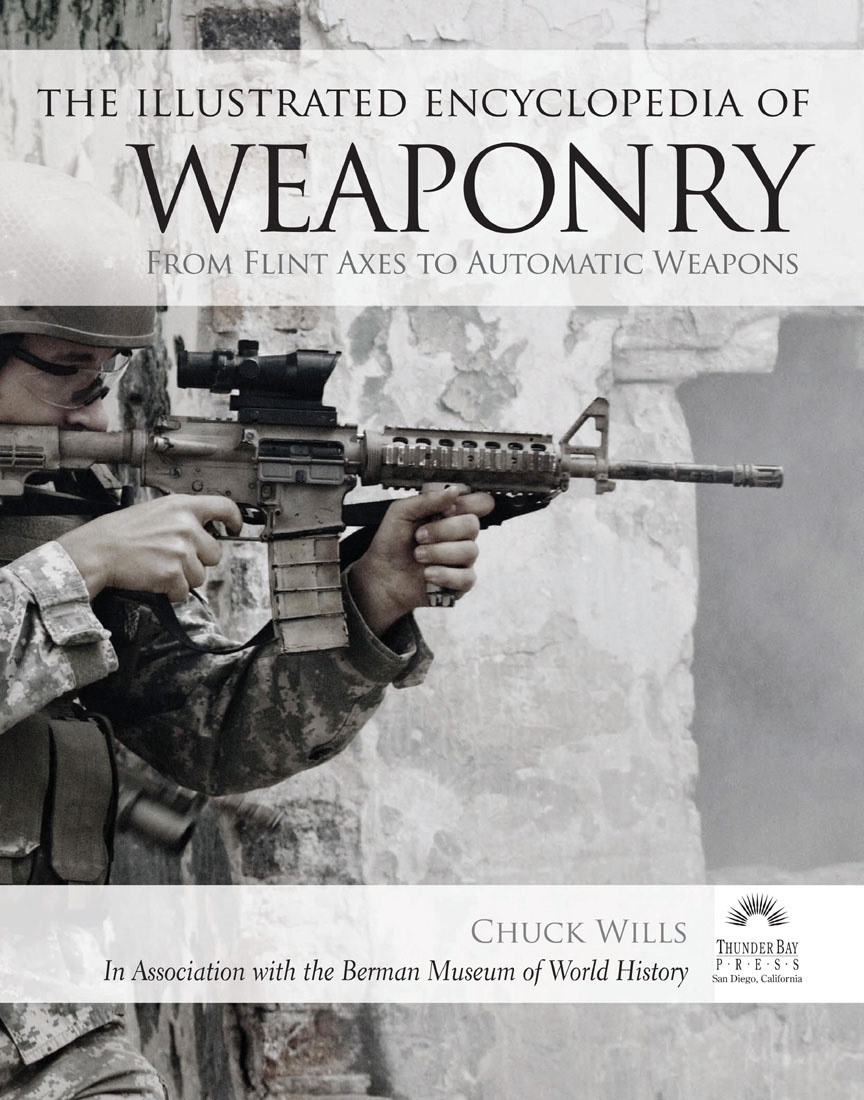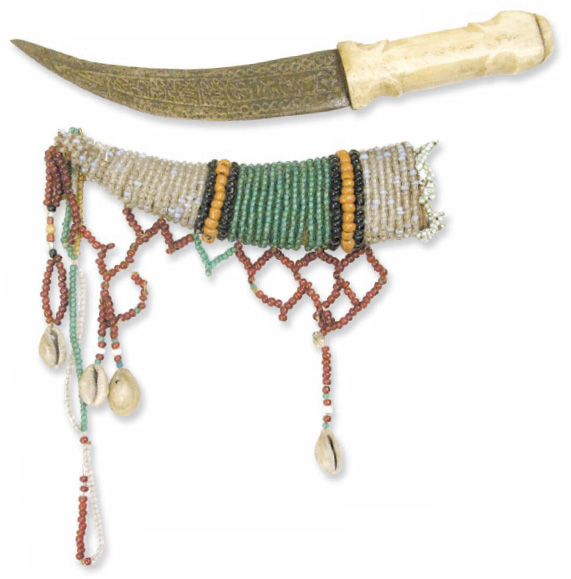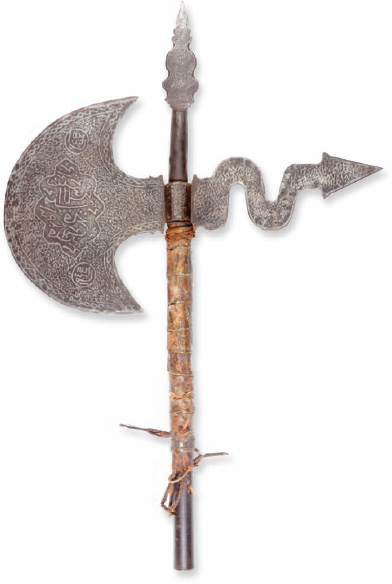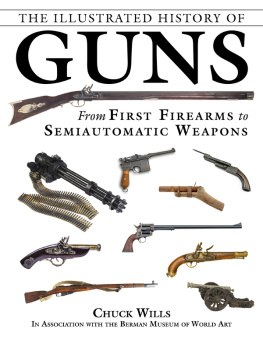THE ILLUSTRATED ENCYCLOPEDIA OF
WEAPONRY




| Thunder Bay Press
An imprint of the Baker & Taylor Publishing Group
10350 Barnes Canyon Road, San Diego, CA 92121
www.thunderbaybooks.com |
Publisher: Peter Norton
Moseley Road Inc.
123, Main Street Irvington, New York 10533
www.moseleyroad.com
Moseley Road
Publisher: Sean Moore
General Manager: Karen Prince
Art Director: Tina Vaughan
Production Director: Adam Moore
Editorial
Lisa Purcell, Jo Weeks, Jill Hamilton, James Harrison,
Frank Ritter, Phil Hunt, Damien Moore
Index: Nancy Ball
Design
Heather McCarry, Mark Johnson-Davies
Photography
Jonathan Conklin, Sean Moore, Assisted by Kira Tidmore
Additional photography by Richard McCaffrey
Picture research
Jo Walton
Berman Museum of World Hostory
Adam Cleveland, Susan Doss, David Ford
North American Compilation Copyright 2012, Thunder Bay Press
Copyright 2012, Moseley Road Inc.
Copyright under International, Pan American, and Universal Copyright Conventions. All rights reserved. No part of this book may be reproduced or transmitted in any form or by any means, electronic or mechanical, including photocopying, recording, or by any information storage-and-retrieval system, without written permission from the copyright holder. Brief passages (not to exceed 1,000 words) may be quoted for reviews.
Thunder Bay is a registered trademark of Baker & Taylor. All rights reserved.
All notations of errors or omissions should be addressed to Thunder Bay Press, Editorial Department, at the above address. All other correspondence (author inquiries, permissions) concerning the content of this book should be addressed to Moseley Road Inc.,
ISBN-13: 978-1-60710-984-6
Library of Congress Cataloging-in-Publication Data available upon request.
2 3 4 5 16 15 14 13 12



CONTENTS
THE GREATEST JOY A MAN CAN KNOW IS TO CONQUER HIS ENEMIES AND DRIVE THEM BEFORE HIM. TO RIDE THEIR HORSES AND TAKE AWAY THEIR POSSESSIONS. TO SEE THE FACES OF THOSE WHO WERE DEAR TO THEM BEDEWED WITH TEARS, AND TO CLASP THEIR WIVES AND DAUGHTERS IN HIS ARMS.
Genghis Khan




F ROM THE ROCK FIRST HELD in the hands of Paleolithic man to the twenty-first century assault rifle, weapons have been an integral component in human history. As early humans evolved, so did their technology. Small rocks became specialized tools and weapons. These early innovations helped man in his quest for food, and eventually in protecting both family and territory. Stone technology gave way to metallurgy and as humans passed through each period of historycopper, bronze, and irontheir use and development of weapons increased. With the advent of agriculture and animal domestication, the reliance on weapons shifted from hunting food to protection from wild animals and other humans. Newly acquired possessionsfood, animals, and sheltercarried intrinsic wealth and brought status. Humans used weapons to protect both.
Early weapons were effective only in hand-to-hand combat. The introduction of gunpowder into Europe brought radical change in weaponry and warfare. Its military use was first recorded in 919 c.e., and by the eleventh century explosive bombs filled with gunpowder were fired from catapults in China. Europes initial use of gunpowder in the thirteenth century was recorded by the English philosopher Roger Bacon, and cannons were made in Florence, Italy, around 1326 with technology used by bell makers. By the later fourteenth century, hand-held firearms made an appearance. When metal projectiles could pierce armor, chain mail became a necessity, yet often was a poor defense against gunpowder and lead. Soon hand-to-hand combat was used only as a last means of defense.
THE ROOT OF THE EVIL IS NOT THE CONSTRUCTION OF NEW, MORE DREADFUL WEAPONS. IT IS THE SPIRIT OF CONQUEST.
Ludwig von Mises
The design of new weaponry was not left to the military. Leonardo da Vinci, the great Renaissance artist and inventor who hated war was, however, fascinated by structure and function and the beauty of design and utility. This must have been why his great genius was used in inventing numerous weapons, including missiles, multibarreled machine guns, grenades, mortars, and even a modern-style tank. As deadly as these early weapons were, it would be several centuries before technological advances allowed hand guns to fire more than one projectile at a time. Guns did not cause the obsolescence of other weapons; knives, swords, and other implements were still needed in combat. To overcome the deficiency of single-fire weapons, combination weaponsthose that could perform more than one functionwere developed. Single-fire guns were fitted with bayonets, and the fighting ax contained a gun in the handle. If the shot missed the target, its user had an alternate defense source. Combination weapons continue to be manufactured today. A recent example would be a cellular phone that contains a small .22 caliber pistol that could be used for assassinations or easily smuggled through security screening by terrorists.
Multishot weapons appeared in the nineteenth century. Early examples called pepperboxes shot from five to twenty times. Perhaps the most famous multishot weapon was the Gatling gun, capable of firing up to 800 rounds per minute, whichhad it been introduced earliermight have meant an earlier triumph by the Union Army during the U.S. Civil War. The twentieth century saw its share of multishot weapons; one of the best known was the Thompson submachine gun used by the likes of Roaring Twenties gangsters Dillinger and Bonnie and Clyde. Once it was adopted by the military, the multishooting machine gun changed warfare. With one-shot guns, advancement toward an enemy could be accomplished during reloading. With machine guns, movement on an open battlefield became more deadly, and gunplay was performed from entrenchments and behind barricades. Technology changes were required to protect battlefield soldiers. Tanks and other armored vehicles were developed in the early twentieth century to reduce battle casualties by protecting soldiers as they advanced across an open battlefield.
Next page
















